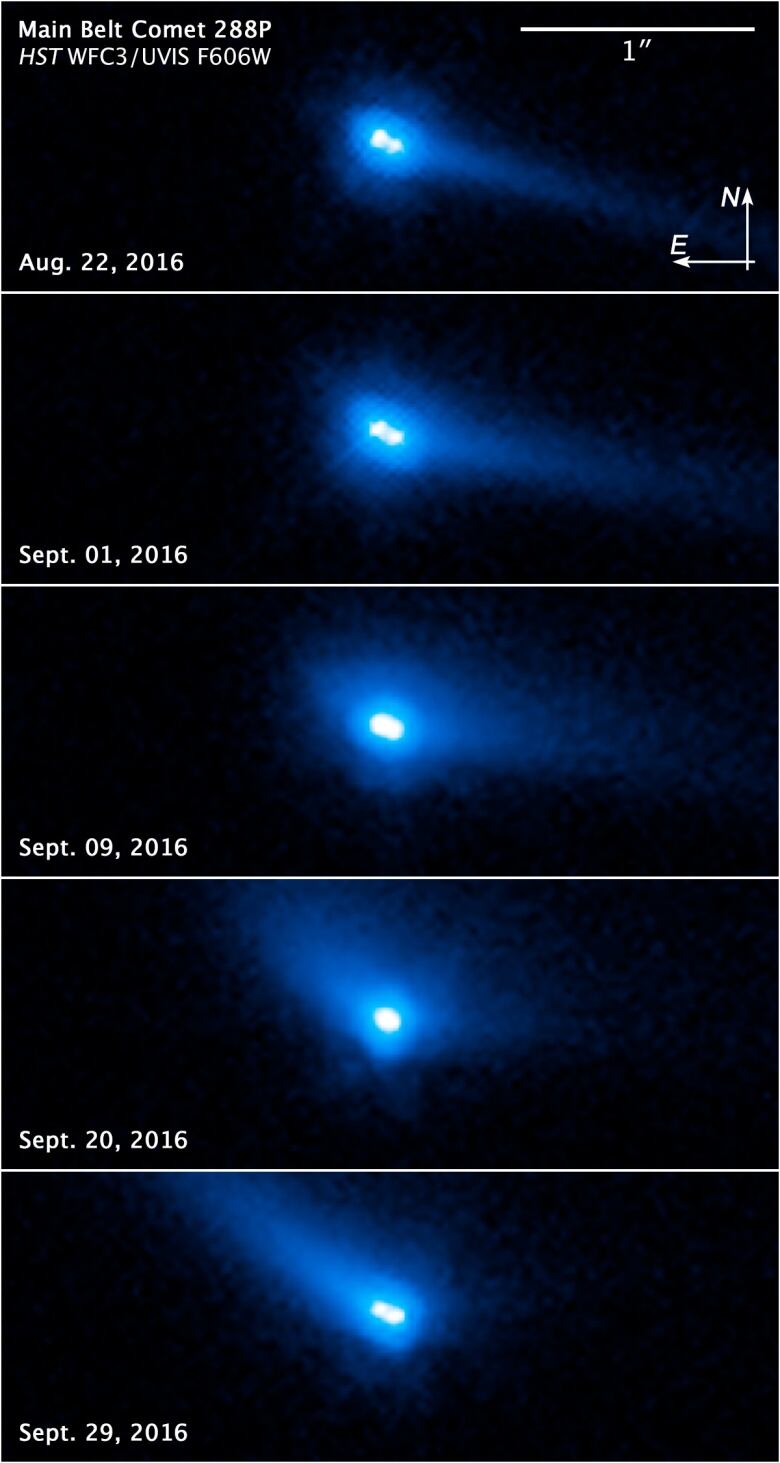Astronomers discover an asteroid is actually two and that it's also a comet
Finding makes it a first for a binary asteroid to be also classified as a comet

When is an asteroid not just an asteroid? When it's a comet.
Astronomers using the Hubble Space Telescope have found that an asteroid discovered in 2006 is actually two and that it sprouts a tail just like a comet.
While comets originate from beyond Neptune in a region called the Kuiper Belt, asteroids orbit the sun in two locations, the main one being the asteroid belt between the orbits of Mars and Jupiter.
However, in 2011, astronomers discovered that asteroid 300163 (2006VW139) was displaying some cometary activity and gave it the cometary designation of 288P.
Then, in September 2016, just before it made its closest approach to the sun, astronomers from the Max Planck Institute for Solar System Research imaged the asteroid/comet and got a pleasant surprise.Instead of seeing a single asteroid, they found two.
- Why an asteroid (probably) won't wipe us out
- Spacecraft on its way to asteroid will slingshot past Earth on Friday
- Ancient Canadian meteor strike created hottest rock on Earth
The pair are almost the same mass and size and orbit one another about 100 kilometres apart. This is the first time two asteroids that orbit one another collectively called a binary asteroid have also been classified as a comet.

While there had been some suspicion that it could be two asteroids, astronomers were thrilled to be able to confirm it.
It's something we haven't seen yet, and we don't know why- Jessica Agarwal, Max Planck Institute for Solar System Research
"It was very nice to see that, indeed, we had the right suspicion," Jessica Agarwal, lead author of the study published in Nature, and astronomer at the Planck Institute, told CBC News.
There are few asteroids considered to also be comets. That's because comets are made primarily of ice and dust, sprouting tails as they orbit the sun. This occurs due to a processcalled sublimation, whenthe ice skips the water stage and goes straight to a gas, producing the tail we see.
Asteroids, on the other hand, are typically rocky, with little water ice. It's believed that millions of these mostly irregularly shaped rocky worlds exist in two regions orbiting the sun.
So to have a binary system with cometary activity is unusual.
"It's something we haven't seen yet, and we don't know why," Agarwal said.
Answering questions
While asteroids are believed to be as old as the solar system 4.6 billion years old the water contained in them is much, much younger. Agarwal explained that models suggest that the ice from this binary asteroid is likely only 5,000 years old.
As for how the binary asteroid came into existence,it's likely a single asteroid was rotating so rapidly that it tore itself apart, revealing the water ice inside.
"And it acted like a little rocket; it was propelling the asteroids further apart, basically," said Agarwal.

There are only five known asteroids to have recurring cometary properties, occurring at perihelion, when the asteroid is closest to the sun and the ice warms up, producing the coma, which gives it a fuzzy appearance,and the tail.
One of the questions astronomers hope to answer is how water came to Earth. In the scientific community, two predominant theories have emerged: either it was a comet or an asteroid. Agarwalsaid she hopes discoveries like this will help solve the mystery.
Meanwhile, there will be further Hubble observations this fall and winter, though the comet will be farther away. But Agarwal said there are still some unanswered questions.
"For instance, one thing Iwould like to know if both components are active or just one of them is active. This is still something we have to find out."












_(720p).jpg)


 OFFICIAL HD MUSIC VIDEO.jpg)
.jpg)



























































































